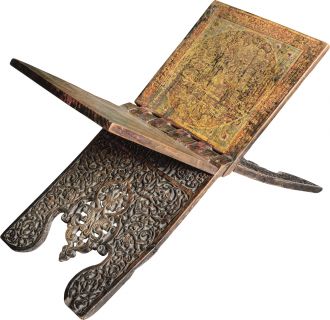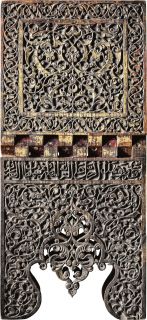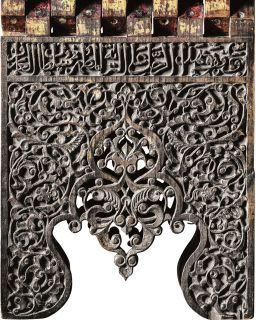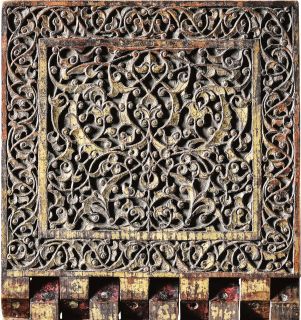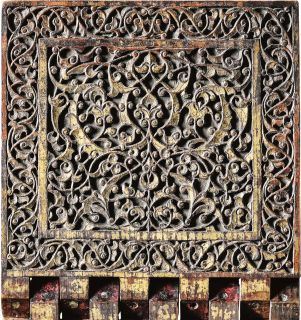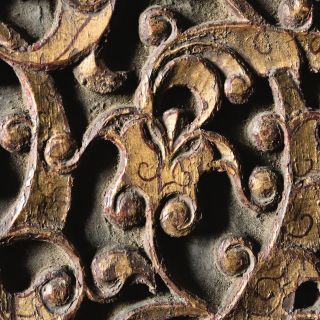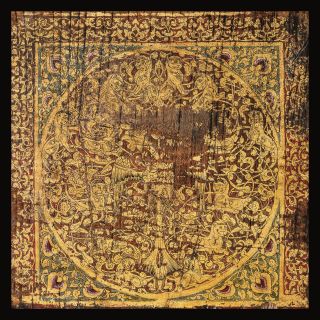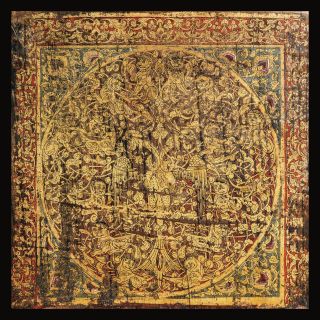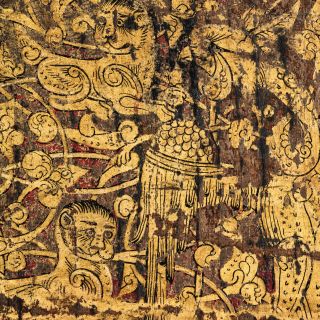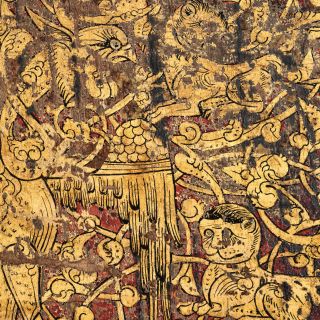Wooden Qur’an Stand
Turkiye13th Century
An important example of Seljuk era woodwork, the Qur’an stand has a special place with its gilded carvings, figural decoration and inscriptions. Made from a single piece of walnut wood the stand has denticulated tenons. The decoration on both sides are symmetrical and the denticulated tenons divide the outer surfaces in two. The upper parts feature a palmette-rumi composition framed by a border of rumis. The motifs with long leaves and volutes create a dynamic appearance. The lower parts with a single line inscription are animated by the lobed arch. The decoration starting from the spandrels and reaching down to the feet features motifs of the same character as on the upper parts. The floral design in the arch is carved in openwork. The outer surfaces are entirely gilded and the motif leaves are painted in red. The inner surfaces are decorated with kalemişi (painting/stencilling) and lacquered. A medallion surrounded by a border of gilded palmettes and rumis is contoured in black on red background. The medallion features the same colours and a double-headed eagle and fourteen lion figures. The eagle in heraldic posture placed in the centre is rendered with detailed head, wings and claws; it is flanked on both sides with symmetrically placed seven lions; each of the seven is rendered in a different posture. In the spandrels of the medallion are motifs against blue background and some of the leaves have purple paint with white contours.
The inscription states that the Qur’an stand was dedicated to the Tomb of Rumi in 1279/80 by Jamal al-Din. That the phrases of stand and tomb are mentioned here is as important as the donor’s name and date.

